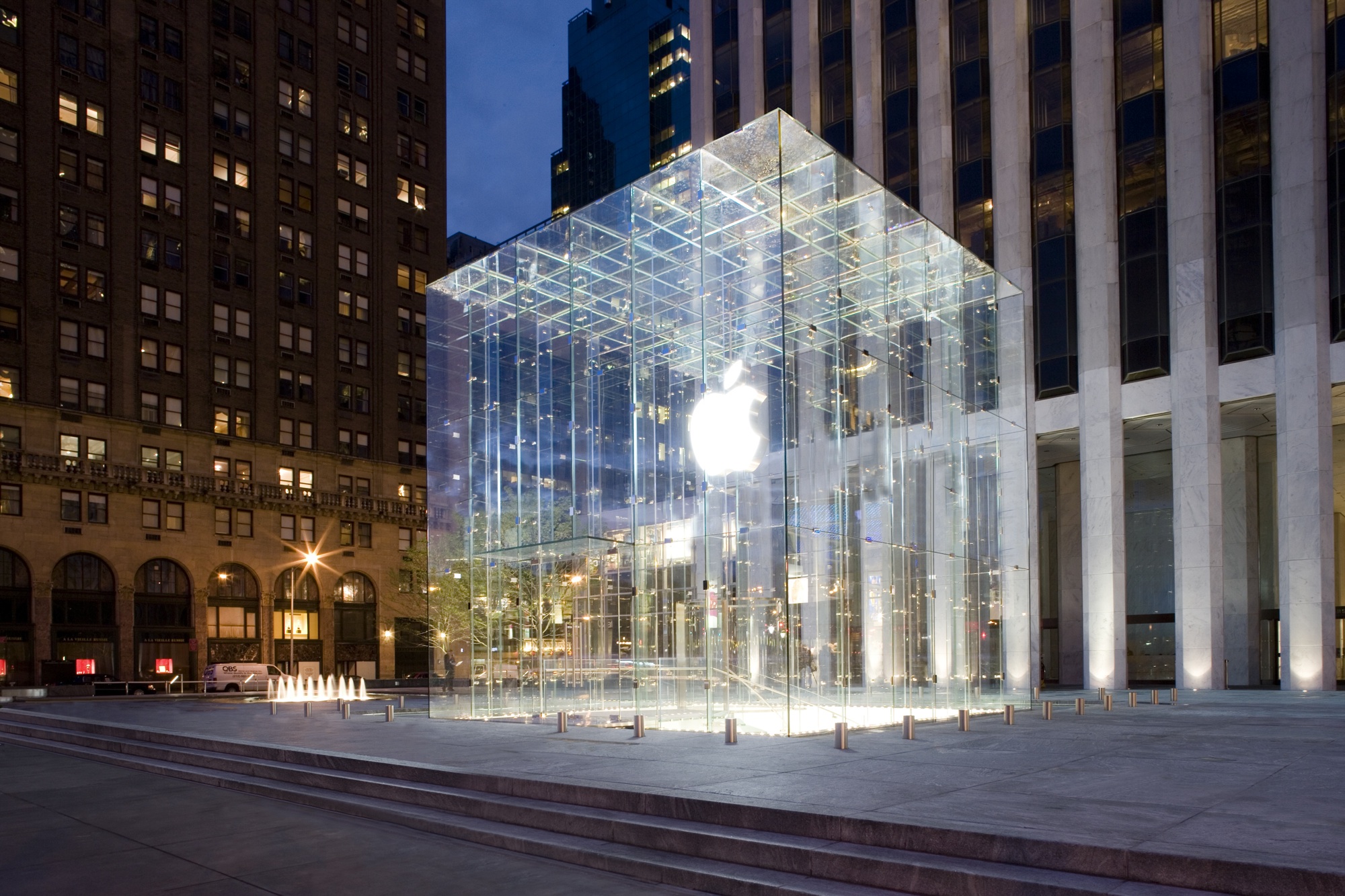
Apple Watch - Retail Rethink
April 17, 2015The most complicated consumer electronics product ever
The Apple Watch is the most complicated consumer electronics device yet created. This complexity runs deep with bespoke components like the S1 system-on-a-chip, the Force Touch Retina display, and the Taptic Engine - all designed in-house. The complexity extends outwards with multiple casings, bands, and clasps manufactured to seemingly impossible precision. The Apple Watch is a tedious device to build, even for the likes of Apple. Considering it also comes in two sizes, three different metals, and with two dozen different bands, the manufacturing challenge starts to look unwieldily. Having so much product complexity means Apple needs to correctly predict the right mix (what combinations of watches and bands are most popular), or risk the kind of inefficiencies that hurt sales and slow adoption. There's a comparison to be made with the rigours of making cars, but that’s another story
Apple's most difficult marketing pitch yet
The watch is not only the most difficult design and manufacturing challenge Apple has ever undertaken, it's also Apple's most difficult marketing challenge to date. The Macintosh and the iPhone were both revolutionary products people recognized as such when they first saw one. The same could be said for the iPod and iPad, but to a lesser degree. I don’t think most people see the Apple Watch as revolutionary and though I disagree, I understand the misunderstanding. For many, the Apple Watch seems like an iterative version of the iPhone - especially since (for now), the Apple Watch requires one for much of its functionality.
Today the Apple Watch is largely misunderstood, but it will come to be regarded as a watershed event that put the “personal” in Personal Computer.
In the meantime, Apple seems to have recognized that it’s easy to perceive the Apple Watch as a solution in search of a problem. You can see it in the sheer scope of the Apple Watch website: 12 different sections chock-full of massive imagery, expansive galleries, unveiling and introductory videos, guided tours, and use-case scenarios. The reason for all this is simple: For Apple to sell you a watch, they need to blow you away online in order to get you to try one on in person.
I can see now why Apple hired Angela Ahrendts. She is to retail shopping what Jony Ive is to design and what Tim Cook is to logistics. Frankly, she needed to be. Apple needed someone who could completely re-think how it sells a product like the Apple Watch. So far, it seems Angela has succeeded in turning the massive ship that is Apple global retail.
Reimagining the retail sales experience
My experience at my local Apple Store was personalized in a way you expect from a jeweller, not a consumer electronics retailer. But unlike a jeweller, there was zero pressure put on me during the entire process. I’m not even sure I’d call it sales in the traditional sense. Nobody asked me to buy anything! I spent at least 15 minutes trying out a demo model, which was tethered to an impressive display that provided interactive information based on what I was actually doing with the watch. The demos, custom tables, display cases, and helpful staff are all crafted to do one thing: get you to try it on.
To try one on, you sign up for an appointment that usually takes place within a few minutes. An Apple employee will assemble any of the models with any of the bands you like. If you want to buy one, you do it online and as of right now, it won’t be shipped to you for up to two months. Despite the utter lack of instant gratification, people are placing orders faster than Apple can fill them.
After trying one on, I shed any doubt whether or not the Apple Watch was indeed a piece of jewellery. It’s beautiful in both its looks and in its craftsmanship. It’s something you can feel right away even with the Sport, and with every band you try. Because the Apple Watch is an object of desire, regardless of how useful or powerful it is as a computing device, it can’t be sold or launched the same way an iPhone is.
A huge departure
This new sales process is a huge departure for Apple. They needed to find a way to convince people to buy something that wasn't actually available. It looks like they succeeded. When Apple opened up online pre-ordering it only took minutes for it to sell out, and even that didn’t stop somewhere between 2 and 3 million people buying it sight unseen.
Being a piece of jewellery separates the Apple Watch from every other “smart” watch on the market. I think Apple's competitors lack the vertical integration, design chops, and the technical and manufacturing capabilities required to take on the Apple Watch. Even if they can, they're going to have a rough time selling their wares. Selling a piece of jewellery requires a highly personalized and physical sales experience. Selling millions of pieces of jewelry requires a global footprint of bricks and mortar stores - something Apple has and its competitors don't. Let’s face it, you can’t sell jewellery at Best Buy.
For the foreseeable future, there's no way for Apple to satisfy demand, so the sales process and launch for the Apple Watch had to be different from the iPhone, iPad, and iPod. The backlash from people lining up on launch day and walking away with nothing would be toxic. On the upside, scarcity prevents scalpers from buying up Apple Watches and flooding overseas gray markets and online auctions. This is especially important in the case of the gold Edition models which people would surely smuggle to avoid VAT and luxury taxes in their home countries. By maintaining a tightly controlled sales process, Apple is very effectively marketing the Apple Watch as something exclusive, despite the fact they’re selling millions of them.
Buying something you can't have
I woke up at 4am on Friday the 10th. I picked out a watch and a second strap. I paid for it with my fingerprint. Within a minute, I was back to bed. Hopefully I'll get delivery on April 24th. There’s no stock on launch day. If there are lineups, it’s only to try it on and get in line - online. There’s no expectation that you can walk into an Apple Store and walk out with a watch. I bet that even when Apple can keep up with demand, it will continue to use its stores for try-ons and placing orders, and not so much for carrying stock. Apple has bet that if the product and the experience is desirable enough, people will queue up for things they can’t actually have yet. This is how they will sell the world’s first mass-adopted piece of jewellery.
Other posts by Chris Marriott
- Seeking Backstage Resellers
- Preemptive Multi-Talking -- Johnny and the Liquidators
- Preemptive Multi-Talking -- Pundits are the worst!
- Preemptive Multi-Talking -- WWDC 2016
- Preemptive Multi-Talking -- Of Cash Piles and Job Cuts
- Preemptive Multi-Talking -- 60 Scary Minutes Edition
- Preemptive Multi-Talking -- [R]Evolution Edition
- Preemptive Multi-Talking -- Pinocchio Edition
- Preemptive Multi-Talking -- FBI vs. Apple
- Preemptive Multi-Talking -- 1984 Edition
- Preemptive Multi-Talking -- Earnings Madness Edition
- Preemptive Multi-Talking -- All your passwords are belong to us.
- Preemptive Multi-Talking -- Fog, Fizzle, Flop Edition
- Preemptive Multi-Talking -- FUD Redux Edition
- Preemptive Multi-Talking -- Privacy be Damned Edition
